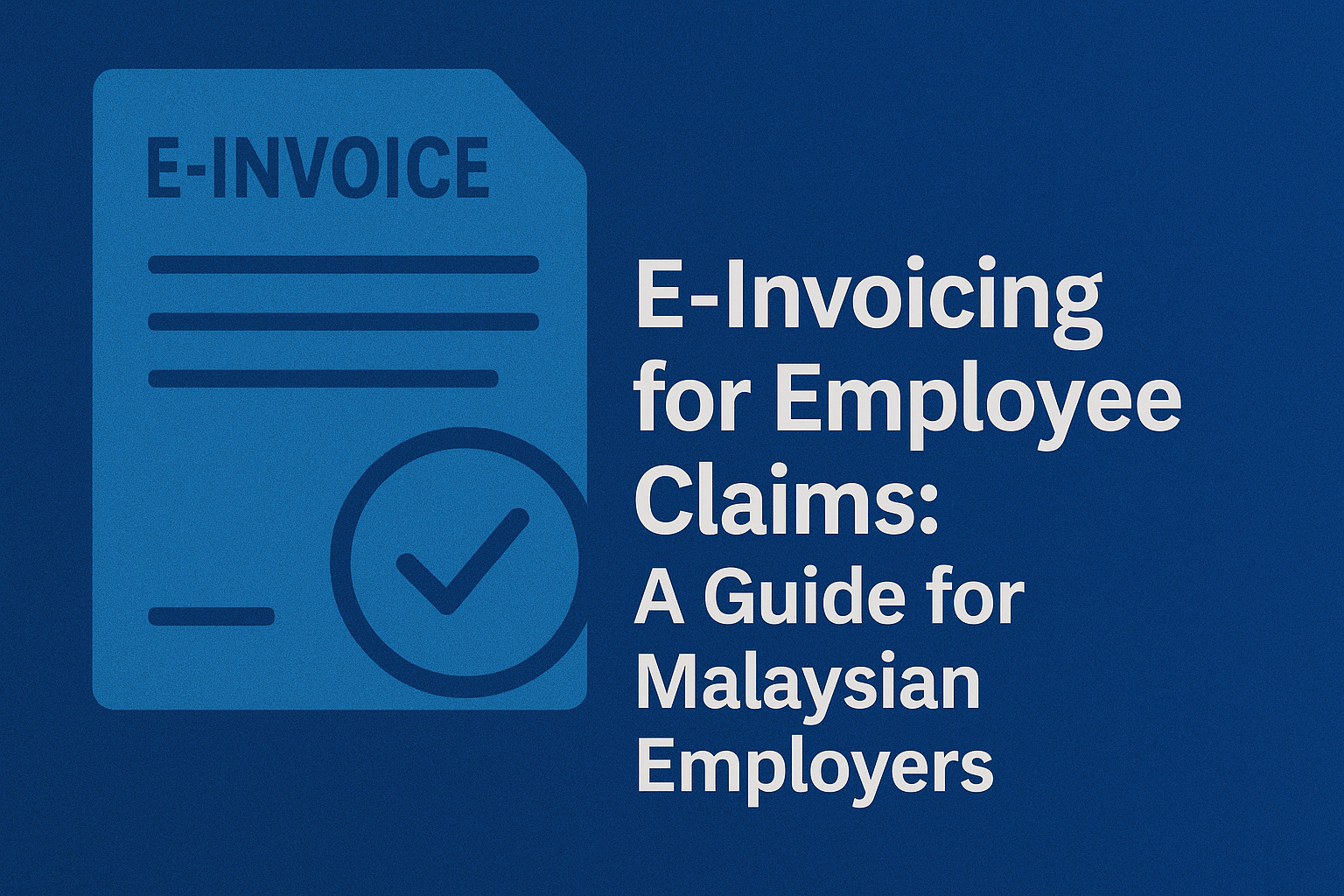With the nationwide rollout of e-invoicing in Malaysia, one of the most common questions puzzling both employers and employees is: “How do we handle employee expense claims?” When an employee pays for something out-of-pocket, who should the e-invoice be issued to—the employee or the company?
Getting this wrong can lead to compliance issues and complications in claiming tax deductions. Thankfully, the Inland Revenue Board (LHDN) has provided specific guidelines (under Section 6.7 of the E-Invoice Specific Guideline). This article will break down the process into simple scenarios to ensure your company’s claim process is fully compliant.
The Golden Rule: It Depends on Who the Purchase is For
The first and most important step is to distinguish between two fundamentally different types of employee claims:
- Purchases on Behalf of the Company: These are company expenses that an employee pays for out of convenience (e.g., buying office stationery).
- Reimbursable Personal Expenses: These are personal expenses that are eligible for reimbursement as a benefit under the employee’s employment contract (e.g., medical claims, professional subscription fees).
The e-invoicing treatment for each is different.
Scenario A: Purchases Made on Behalf of the Company
This applies to any expense that is directly for the company’s use.
- The Rule: For these transactions, the employee must request the e-invoice to be issued in the company’s name.
- What to Provide to the Supplier: The employee should provide the company’s TIN, name, and address to the vendor.
- Examples:
- Buying office supplies.
- Paying for a delivery service for company goods.
- Purchasing small tools or equipment for the office.
Scenario B: Reimbursable Personal Benefits
This applies when an employee incurs a personal expense that the company has agreed to reimburse.
- The Rule: For these transactions, the e-invoice should be issued in the employee’s name.
- What to Provide to the Supplier: The employee should provide their own personal TIN, name, and address.
- The Company’s Next Step: To claim this reimbursement as a business expense, the company will then need to issue a self-billed e-invoice to document the payment made to the employee.
- Examples:
- An employee visiting a panel clinic for a medical check-up.
- An engineer paying for their annual professional body subscription fee.
Scenario C: Handling Overseas Claims
What about expenses incurred by employees while travelling overseas?
- The Rule: Foreign vendors cannot issue a Malaysian e-invoice. Therefore, employees should collect traditional bills and receipts for their claims.
- Receipt Requirements: The receipt must clearly state the supplier’s name and address. It can be issued in the employee’s name.
- The Company’s Next Step: Similar to Scenario B, to properly record this expense for tax purposes, the company must issue a self-billed e-invoice based on the reimbursement made to the employee.
The Key to Success: A Clear Employee Claim Handbook
To avoid confusion and ensure compliance, the most effective step you can take is to create or update your Employee Claim Handbook. This internal guideline should clearly instruct all employees on:
- Which expenses are claimable.
- The distinction between a company purchase and a personal claim.
- Exactly what TIN (company’s or their own) to provide in different situations.
This simple document can prevent countless invoicing errors and ensure your accounting records are clean and compliant.
How SMONE Can Streamline Your Process
Implementing these new e-invoicing workflows for employee claims requires clear internal policies and robust accounting procedures. At SMONE, we help businesses design compliant claim processes and ensure all reimbursements are correctly documented for tax purposes.
Our Payroll & HR Compliance and Cloud Accounting services work together to make this process seamless for you and your employees. Contact us today to optimize your employee claims system for the e-invoicing era.
(Disclaimer)
This article is for general informational purposes. It does not constitute legal or tax advice. Please refer to the latest official guidelines from LHDN for complete information.


